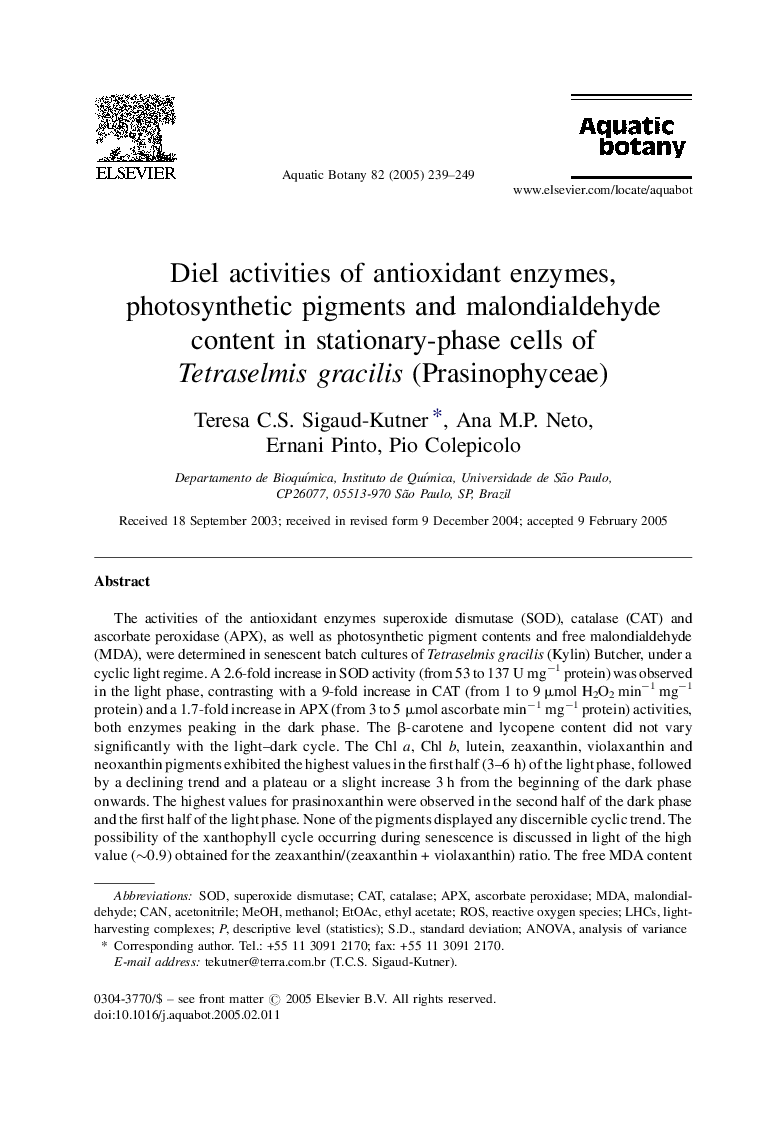| Article ID | Journal | Published Year | Pages | File Type |
|---|---|---|---|---|
| 9477584 | Aquatic Botany | 2005 | 11 Pages |
Abstract
The activities of the antioxidant enzymes superoxide dismutase (SOD), catalase (CAT) and ascorbate peroxidase (APX), as well as photosynthetic pigment contents and free malondialdehyde (MDA), were determined in senescent batch cultures of Tetraselmis gracilis (Kylin) Butcher, under a cyclic light regime. A 2.6-fold increase in SOD activity (from 53 to 137 U mgâ1 protein) was observed in the light phase, contrasting with a 9-fold increase in CAT (from 1 to 9 μmol H2O2 minâ1 mgâ1 protein) and a 1.7-fold increase in APX (from 3 to 5 μmol ascorbate minâ1 mgâ1 protein) activities, both enzymes peaking in the dark phase. The β-carotene and lycopene content did not vary significantly with the light-dark cycle. The Chl a, Chl b, lutein, zeaxanthin, violaxanthin and neoxanthin pigments exhibited the highest values in the first half (3-6 h) of the light phase, followed by a declining trend and a plateau or a slight increase 3 h from the beginning of the dark phase onwards. The highest values for prasinoxanthin were observed in the second half of the dark phase and the first half of the light phase. None of the pigments displayed any discernible cyclic trend. The possibility of the xanthophyll cycle occurring during senescence is discussed in light of the high value (â¼0.9) obtained for the zeaxanthin/(zeaxanthin + violaxanthin) ratio. The free MDA content was enhanced during the experimental period, which may be an indicator of oxidative stress in aging cell cultures. Our results indicated the occurrence of an imbalance between the production of reactive oxygen species and the antioxidant defense in stationary T. gracilis cells.
Keywords
Related Topics
Life Sciences
Agricultural and Biological Sciences
Aquatic Science
Authors
Teresa C.S. Sigaud-Kutner, Ana M.P. Neto, Ernani Pinto, Pio Colepicolo,
